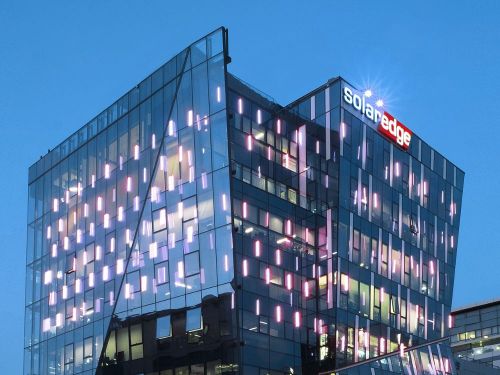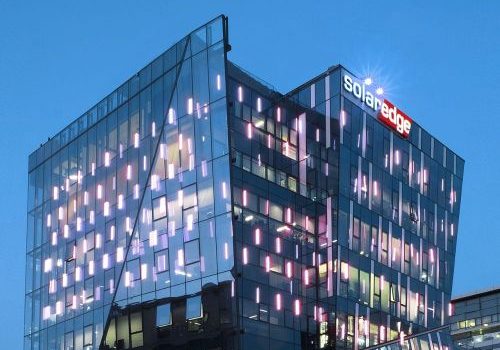SolarEdge Delays Battery Launch as Residential Solar Sales Bolster Slow Commercial Rebound
SolarEdge Delays Battery Launch as Residential Solar Sales Bolster Slow Commercial Rebound

SolarEdge is feeling the pinch of the COVID-19 pandemic in the form of a slower-than-expected recovery for its customers in the commercial solar market. The pandemic also delayed the launch of the company’s residential battery system, as SolarEdge aims to compete with microinverter rival Enphase and other contenders in the fast-growing market for home solar-plus-storage systems.
Still, the Israel-based company reported strong third-quarter results Monday, bolstered by an uptick in residential sales for its solar inverters and power optimizers in North America and Europe. Total revenue of $338.1 million rose about 2 percent from the previous quarter, driven by record European revenue of $165.6 million, up from $144.3 million in the prior quarter.
While North American revenue fell slightly from the second quarter, installation rates and sell-through rates from its distributors were up, CEO Zvi Lando said in Monday’s earnings call. But the recovery from pandemic-related slowdowns in the second quarter hasn’t impacted the commercial sector as rapidly as it has residential, he said.
“Commercial installations both in Europe and the U.S. and even in Australia are recovering [more slowly] than residential, and inventories in the channel are still high,” he said. Non-GAAP gross margins for its solar business, which measure revenue minus cost of sales, stood at 34.8 percent in the third quarter, up from 33.8 percent in the prior quarter but down from 35.4 percent in the third quarter of 2019.
SolarEdge’s exposure to the commercial solar sector crimped its gross margins and revenue compared to Enphase, its chief North American competitor in solar-panel-level power electronics systems. SolarEdge held about 60 percent of the U.S. market as of the first nine months of 2019, compared to about 20 percent for Enphase, according to Wood Mackenzie’s U.S. PV Leaderboard.
COVID-19 delays and travel restrictions have also contributed to the delay of the launch date of SolarEdge’s much-anticipated residential battery system “by several months,” Lando said. While SolarEdge hopes to start shipments by the fourth quarter, an early 2021 launch is more likely, with battery-related revenue pushed into Q2 and Q3 of next year.
Growing battery-coupled inverter sales and grid services partnerships
SolarEdge is eager to bring its own batteries to market in order to serve growing demand for residential solar-plus-storage systems in key U.S. markets and capture the additional revenue from battery sales being realized by competitors including Tesla, Sunrun, SunPower and Generac. Enphase launched its own residential battery system this summer and expects to sell 50 megawatt-hours’ worth of systems through the end of the year.
At the same time, SolarEdge is a partner with many residential solar installers and has been growing its share of the market for inverters to serve their batteries. In Q3, the company delivered about 6,500 of its Energy Hub inverters in the U.S. and more than 8,000 in Europe and Australia, Lando said. SolarEdge’s installed base of DC-coupled residential solar systems serving third-party batteries, typically LG Chem or Tesla models, has grown to about 50,000 to date, according to Lando.
SolarEdge also announced a partnership with Schneider Electric last month to integrate its inverters with Schneider’s Square D Energy System, a device that’s a combination electrical panel and energy management platform. These types of integrated systems are becoming more important as customers demand more control over their batteries for backup power, particularly in markets such as California, which is facing threats of wildfire-prevention blackouts.
SolarEdge is also expanding its competitive stance against Sunrun, Generac, sonnen and other companies linking solar-battery systems into virtual power plants to serve grid needs, with utility customers in the U.S., Europe and Australia, Lando said. It recently launched a pilot project involving frequency-triggered curtailment of commercial sites, its first nonresidential grid services project.
Even so, SolarEdge’s solar business provides the vast majority of its revenue. Continued softness in commercial solar sales led the company to reduce its fourth-quarter guidance for total revenue to a range of $345 million to $365 million, below analyst consensus predictions of $390 million.
“Commercial revenue for us has been declining for the last couple of quarters, and it’s not going to pick up in Q4,” Lando said. SolarEdge predicts that next year will provide relief, however. “We believe the same strength that worked for us during the challenging times of 2020, in terms of our geographical spread and our product diversification, will put us in a good position for 2021.”









